
The article is dedicated to the main rules and definitions of shooting and further picture editing in graphics editors. We will learn about “golden section” rule, geometrical proportions, which help us to create amazing and balanced pictures in case you use them in right and correct way.
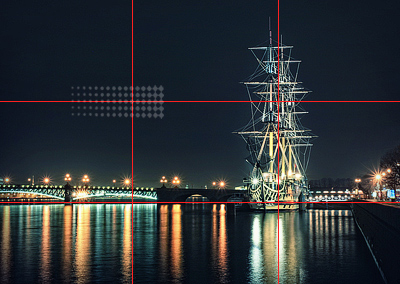
Mathematical interpretation
Mathematically “golden section” could be described with following definition – the ratio of the whole to the biggest part are to be equal to the ratio of the biggest part to the least part. If we divide the line into two unequal parts so the ratio of its length (a+b) to the biggest part (a) would be equal to the ratio of the biggest part to the least part (b). That is what we call “golden section”. The ratio is equal 1.618 or 0.618. We settled the whole line (a+b) as 1, a=0.62…, b=0.38 or 62% and 38% respectively.

Picture 1
These figures were named “golden”.
Objects containing “golden section” are regarded as the most balanced. That was the proportion which famous painters referred to when they chose canvas.
“Golden section” rule example in photography could be main components location at the specific points – “viewing centers”. Frequently we use 4 points located at 3/8 and 5/8 distance from the edges.
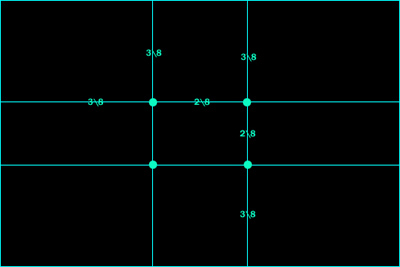
Picture 2
“Golden section” rule in frame arrangement.
Obviously we could not estimate and visually set in our mind essential proportions. Thus at shooting we use simplified method of “golden section” or “a third” rule. In our mind we divide a frame into three parts horizontally and vertically. At the crosses we place the main objects of the picture. The simplest grid is at the picture 3.
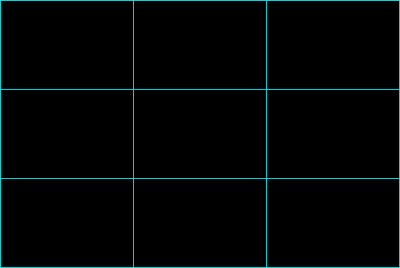
Picture 3
Thereby the frame arranged in accordance with “golden section” could have following view: (pictures 4,5)
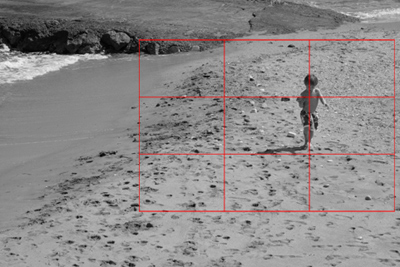
Picture 4
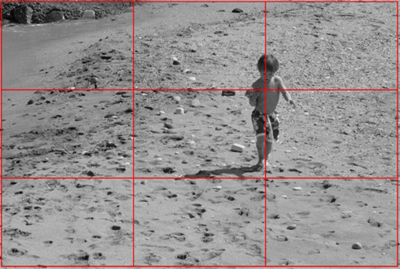
Picture 5
Surely we could combine the object location according to photographer idea and the object. Some examples are at the pictures 6 - 9.
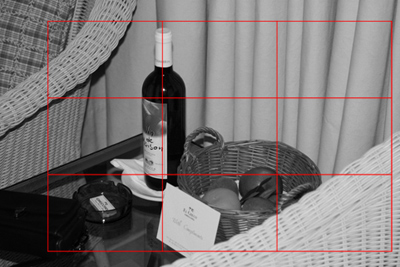
Picture 6
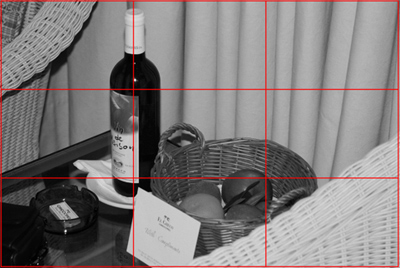
Picture 7
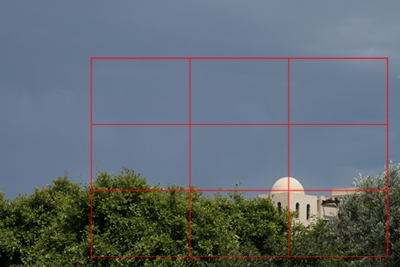
Picture 8
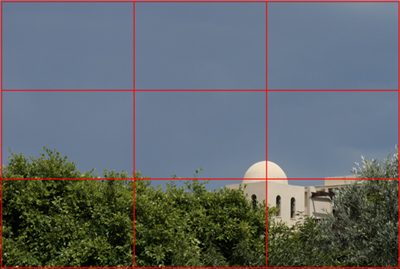
Picture 9
Some remarks about background.
We should not forget about horizontal line when we use “golden section” rule.
Correct horizon location should support one of the horizontal lines (top or lower) depends from the composition. Horizon location matched with lower horizontal line is showed at picture 10.
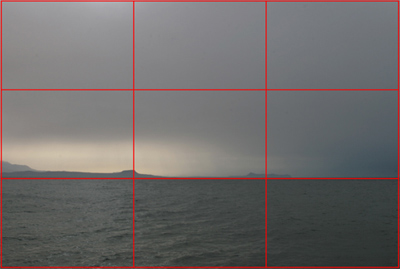
Picture 10
|

It could be told a lot about “golden section”. Below are some samples of grids created in accordance with “golden section” rule. The samples are for different compositions. To understand these principles you have to try to unite the grids with your pictures yourself. Basic grids are at the pictures 11-17:
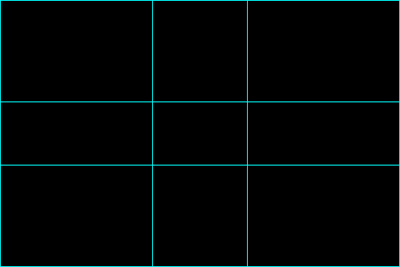
Picture 11
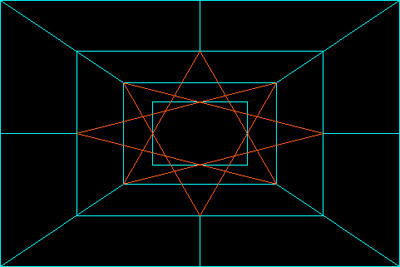
Picture 12
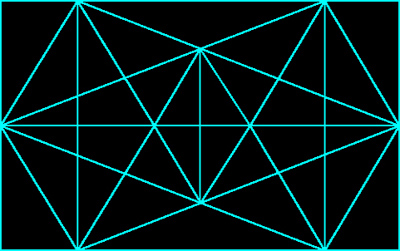
Picture 13
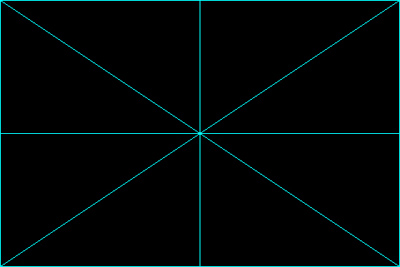
Picture 14
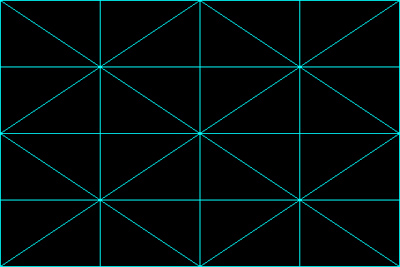
Picture 15
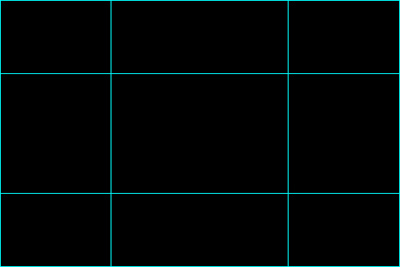
Picture 16
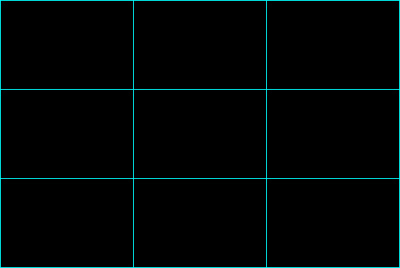
Picture 17
For those who have decided to try it I saved them at the archive as a transparent Layer
download>>
«Balance» rule
Compositionally the picture should be performed with the objects balanced. What does it mean? That means the pictures will be balanced if there is a symmetry in the picture (picture 18 – this case the balanced elements are poles at the right and the left sides), or the main object is compensated with additional or nonessential one (picture 19 – the crane at the left side balances the composition at the right side).
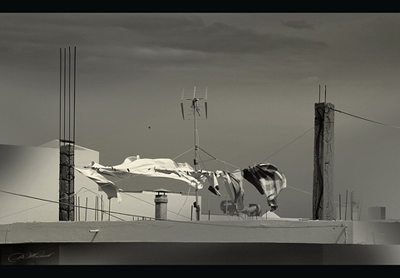
Picture 18
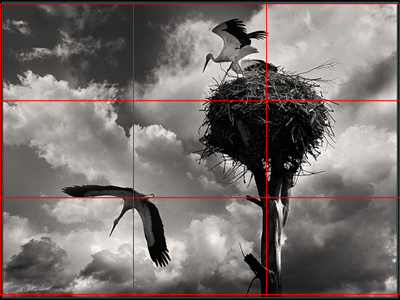
Picture 19
As V.Zoy sang: «There is place to step forward should be”!
Any picture, even created accordingly to the “golden section” rule, could be misunderstood only because there is absent direction of object eyes or actions. At the picture 20 the girl does not have any space to continue her moving (she is go away the frame) in spite of the picture conforms “golden section” rule. At the picture 21 the girl has such space. I will repeat that this rule is valid not only for movement of people, animals, cars, but also for eyes (portrait), movement of body, face and actions.
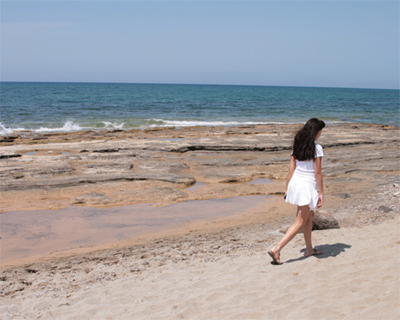
Picture 20
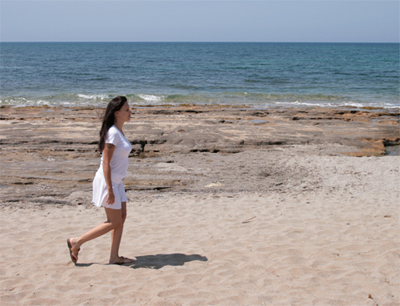
Picture 21
To be continued
Dmitry Zhamkov 2007
|






















